A Rush To Judgment and Journalism’s Future
From Barber, notable comments from and about Neff's presentation include:
“…national media descended on Durham. The first two weeks were “nuts.” The Duke
case was “the most competitive story my newspaper has ever seen,”
“…about the group of 88 Duke professors that took out an advertisement, which was filled with anonymous, third-hand quotes from black students who claimed they felt oppressed and/or threatened at Duke.…the “Group of 88” didn’t get on his paper’s radar until about a month after the ad ran. Local protests had more of an impact. His
paper was getting calls from national media outlets that essentially wanted local reporters to come on their shows and do the reporting for them. According to Neff, hardly anyone at his paper obliged.”“Someone asked Neff about bloggers. Did he find blog coverage of the case worth reading? He said he found well-researched and sourced blogs useful but didn’t find anonymous blogs very helpful. He did mention getting a scoop from the LieStoppers blog discussion board. The governor who appointed Nifong wouldn’t go on the record about Nifong recusing himself from the case. Neff said he learned, through the LS board, that the governor had spoken somewhere and denounced Nifong. Someone at
the paper contacted the governor to confirm, and the governor went on the record.”"...his editor had a “gut feeling” in the beginning that something wasn’t right about Crystal Mangum’s story and that his paper has a strict policy against using anonymous sources...his paper’s photo editor, who is black, wouldn’t run a picture of the lacrosse players with their faces covered as they went to the police station. It made them look guilty, the editor said, and he thought it was too early in the case to run it. The paper ran the photo five weeks later."
Barber's take on the comments from Stuart Taylor included the following:
“…[Taylor] realized very early on that prosecutor Mike Nifong didn’t have much of a case. He rushed a column to print in April 2006, worried that his column might be old news and others would beat him to the punch with this revelation. Taylor assumed many other journalists had reached similar conclusions, and he wanted to get his piece in. He was wrong. His was the only opinion piece from a member of the mainstream media (MSM) who was skeptical about the case.”
"...it was “pretty darned obvious” to any reasonable reporter by mid-April that the Duke case was full of holes. He discussed the DNA and how Nifong himself said the DNA would tell the story, ruling out players while proving others were involved."
"...the NYT was “infected” with political correctness, which affects the editors, reporters, and the way the paper covers news. A reporter named Joe Drape had written something about the Duke case, which the defense liked. They sent him information, hoping he’d do a big story about the mounting exculpatory evidence. Taylor, who must have first-hand knowledge of this, said Drape’s editors took him off the story and didn’t run it. The paper put another reporter on it. Taylor talked about the power and influence of the blogosphere and the dedication exhibited by some of the bloggers covering the case. He specifically mentioned LieStoppers (and KC Johnson, of course) and its thorough parsing of Duff Wilson’s big story.
There may be no better demonstration of the Times' bias than the revelation that Drape, whose forte appears to be covering horse racing for the Times, inspired hope with a single positive article sandwiched between several other stories cut from the Times' mold and co-authored by Drape.
Previously there has been little mention of Drape’s coverage of the Hoax. One exception is a brief comment from KC Johnson in September.
“The Times, however, set the tone for coverage. Between late March and late April, it ran more than 20 stories on the Duke Lacrosse case, often on the front page or the first page in the Sports section. Opinion and news analysis columns, based on very limited (and, as it turned out, inaccurate) information, framed the case in stark moral terms; while a pattern of incomplete claims and transparent pro-Nifong bias appeared in articles penned by Duff Wilson–who, for reasons that remain obscure, replaced Joe Drape as the Times’ lead reporter on the story in early April.” Press (In)Action
The article that Taylor refers to was published on March 31, 2006. Entitled, “Lawyers for Lacrosse Players Dispute Accusations,” the story, which appears to be the only article published by the NY Times under Drape’s individual byline, offered the defense attorneys one of their first opportunities to dispute the Wall of Silence and 911 Hoaxes within the Hoax.
Highlights from Drape’s only solo effort include:
Lawyers representing players on the Duke lacrosse team attacked the account of the woman who accused the players of raping her, and said Thursday that the players would be acquitted when DNA tests were analyzed and other details of the investigation emerged.
The lawyers for the players questioned the authenticity of a 911 call that came about a half-hour before a supermarket security guard called on behalf of the accuser.
…
Kerry Sutton, who is representing Matt Zash, who lived in the house, said her client was one of the three captains who gave police a lengthy interview and written statement and offered to take a polygraph test."They told him it takes too long to set up, it's too much trouble, and it is not admissible in court," Sutton said.
Another lawyer, Jim [sic] Thomas, who represents a captain who provided the police with statements, said no team member was alone with the accuser. Thomas would not say which player he represented.
... Thomas said the characterization by Michael B. Nifong, the Durham County district attorney, that the players had not cooperated was incorrect...Thomas said: "Everyone asks why these young men have not come forward. It's because no one was in the bathroom with the complainant. No one was alone with her. This didn't happen. They have no information to come forward with."
Butch Williams, who is representing Daniel Flannery, the third resident of the house, said the circumstances surrounding the 911 call that came at 12:53 a.m. March 14 did not ring true.
…
Williams and Sutton were at the house Thursday with Zash and Flannery, who were moving out their remaining belongings. Williams pointed out what he called "inconsistencies" in the call's transcripts. The caller at first said the pair were driving by and later said they were walking by, according to the transcript. Williams said there were no numbers on the house, only a faded imprint low on the front door and hidden from the street by a porch rail."Three times she gives the exact address of the house," Williams said. "And there is no address numbers to see, especially at night. It seems too pat to me."
Zash, Flannery and the other captains — David Evans and Bret Thompson — issued a statement Tuesday saying that the DNA results would prove the allegations false.
The articles that Drape contributed to as a co-author include “Team's Troubles Shock Few At Duke,” which ran the day after his sympathetic piece, Duke Players Practice While Scrutiny Builds, from the day before, and “Rape Allegation Against Athletes Is Roiling Duke,” published on March 29. A fourth inflammatory piece co-authored by Drape, “Rape and Racism Alleged at Duke,” ran in the International Herald Tribune on March 30.
For additional information on the National Press Club event, please visit La Shawn Barber's Corner.
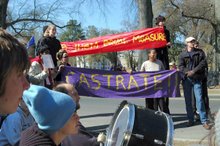




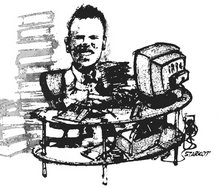
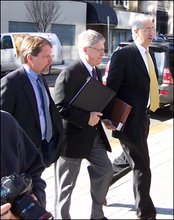
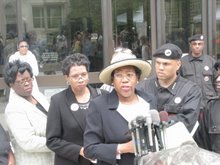
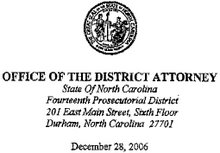
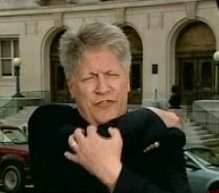

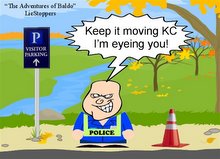



















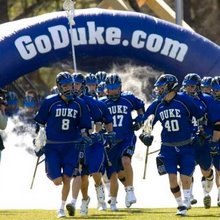

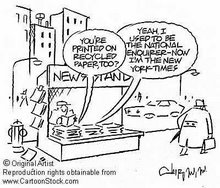

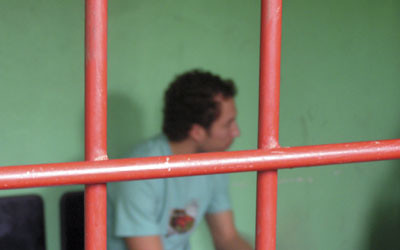
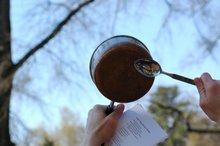

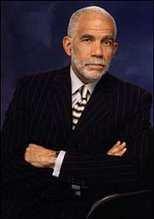







No comments:
Post a Comment